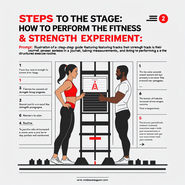
Assessment
Understanding Your Baseline – Measuring Fitness & Strength
Before you begin any fitness and strength interventions, it’s crucial to assess where you currently stand. This section will guide you through key assessments, including cardiovascular fitness (VO2 Max), muscular strength, and body composition. By establishing your baseline, you can track your progress effectively as you move through the experiment.

Estimating Cardiovascular Fitness with METS
•Instead of directly measuring VO2 Max, you can estimate cardiovascular fitness using Metabolic Equivalents (METS). •METS compare energy expended during an activity to energy burned at rest. •The higher the METS, the greater your aerobic fitness level. How METS Relate to VO2 Max: •Example Activities & Their METS Levels: •Walking at 2.5 mph → 2.9 METS •Jogging → 7 METS •Jumping Rope → 11 METS METS to VO2 Max Conversion Table: •Insert the METS chart from the blog post.

Measuring Strength with Grip Strength & Chair Stand Test
•Grip Strength: •A strong grip is correlated with overall muscle strength, longevity, and reduced fall risk. •Norm values for grip strength by age and gender (insert table here). •Chair Stand Test: •Used for assessing lower body strength, especially in older adults. •Steps: 1.Sit on a chair, arms crossed over the chest. 2.Stand up and sit down repeatedly for 30 seconds. 3.Count the number of successful repetitions. •Age-Based Standards for Chair Stand Test (Insert table here).







